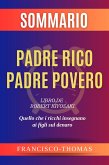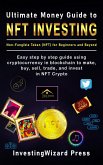Summary of Rich Dad's Guide to Investing by Robert Kiyosaki Chapter 1 of "Rich Dad's Guide to Investing" by Robert Kiyosaki is titled "The CASHFLOW Quadrant." In this chapter, Kiyosaki introduces the concept of the CASHFLOW Quadrant, which categorizes individuals into four different groups based on their primary source of income and their approach to making money. The four quadrants are Employee (E), Self-Employed (S), Business Owner (B), and Investor (I). Kiyosaki emphasizes that understanding which quadrant you primarily operate in and shifting towards the B and I quadrants can significantly impact your financial success. Kiyosaki begins by discussing the differences in mindset and values between the quadrants. He explains that people in the E and S quadrants tend to prioritize job security, a regular paycheck, and often trade their time for money. On the other hand, those in the B and I quadrants focus on creating systems, leveraging resources, and making money work for them. The author explains that people in the E quadrant work for others, trading their time and skills for a fixed salary. They often have limited control over their income and financial decisions. In the S quadrant, individuals are self-employed professionals, such as doctors or lawyers. While they have more control over their income, they often work long hours and their income is tied to their personal efforts. Moving to the B quadrant, Kiyosaki highlights that business owners have systems and people working for them, allowing them to generate income even when they are not personally involved in every aspect of the business. Business owners are more focused on building and managing their assets. Finally, in the I quadrant, investors generate income from their investments, such as stocks, real estate, or businesses. They leverage their money to create wealth and passive income streams. To be continued... Here is a Preview of What You Will Get: ¿ A Detailed Introduction ¿ A Comprehensive Chapter by Chapter Summary ¿ Etc Get a copy of this summary and learn about the book.
Dieser Download kann aus rechtlichen Gründen nur mit Rechnungsadresse in A, B, BG, CY, CZ, D, DK, EW, E, FIN, F, GR, HR, H, IRL, I, LT, L, LR, M, NL, PL, P, R, S, SLO, SK ausgeliefert werden.









